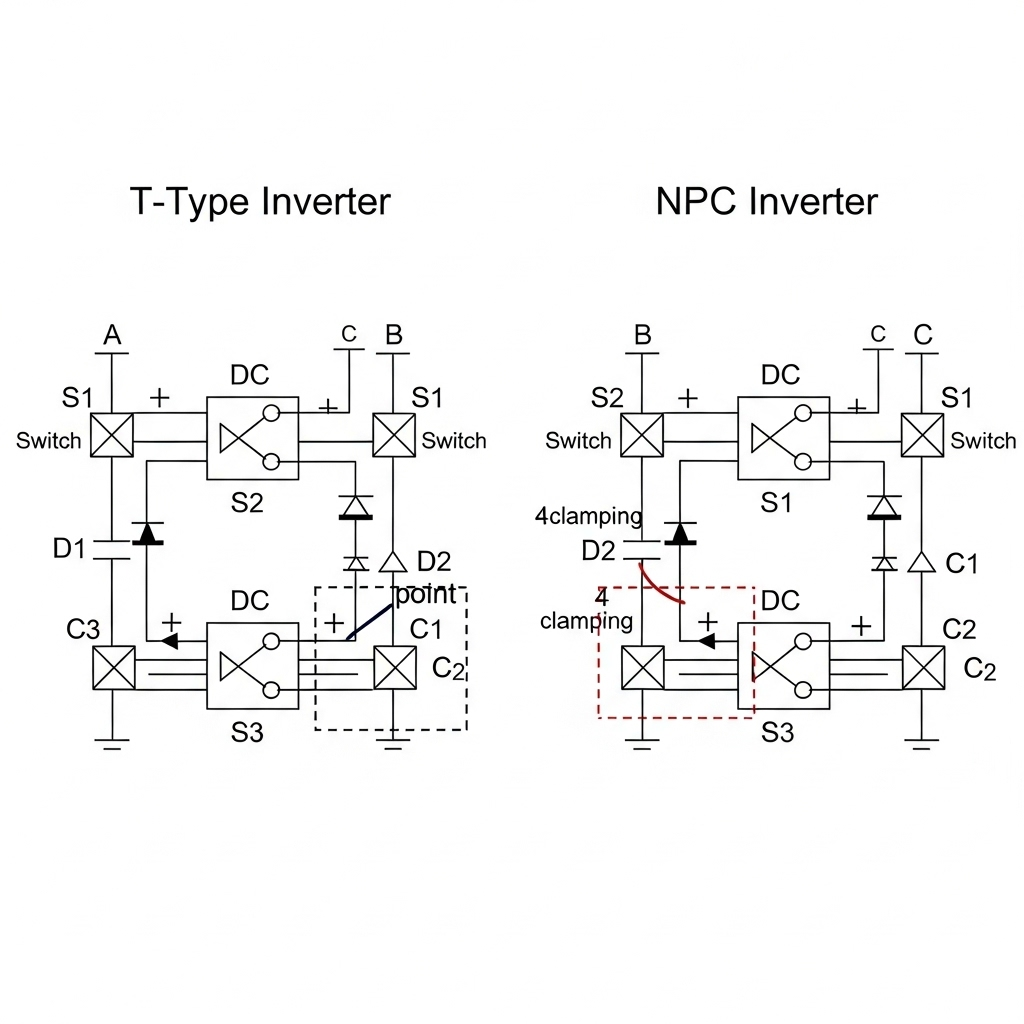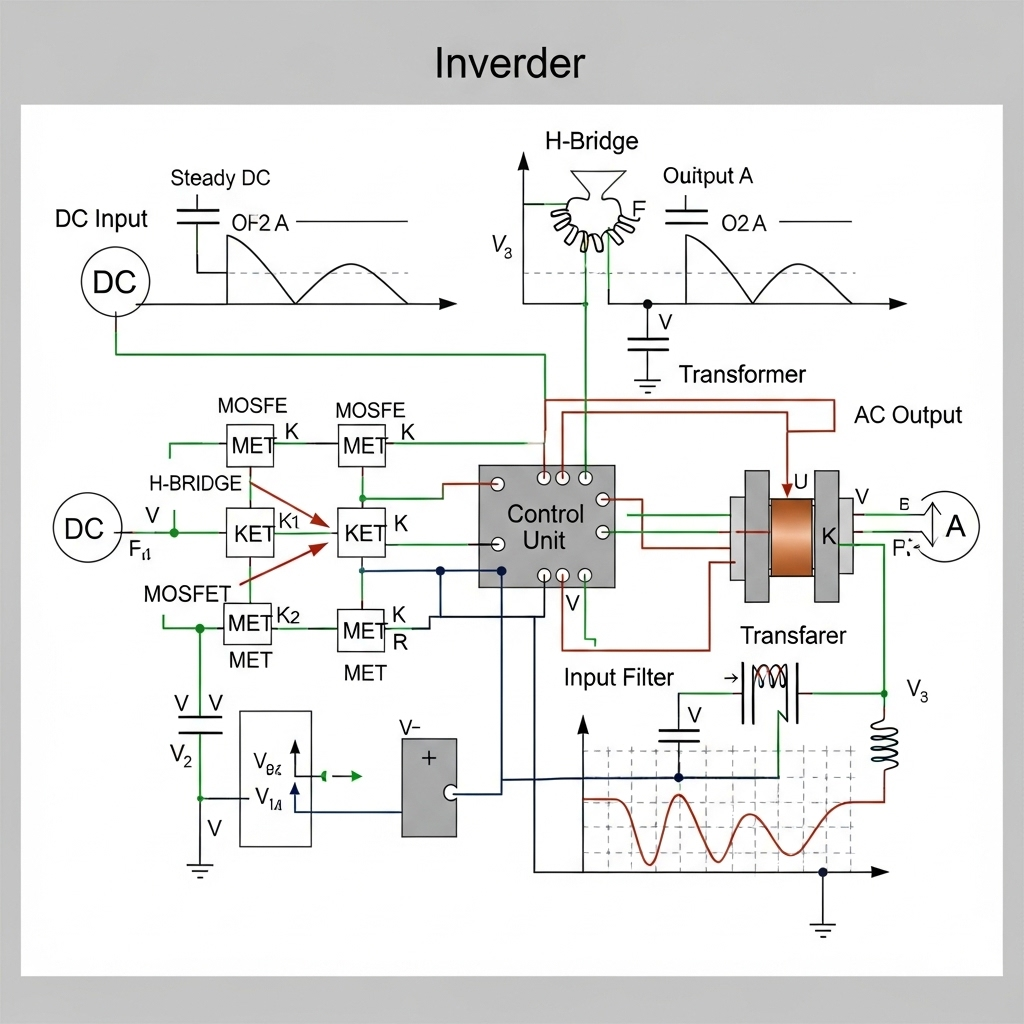In the world of solar energy, the photovoltaic (PV) inverter is the heart of the system. It performs the critical task of converting direct current (DC) from your solar panels into alternating current (AC) for your home or the grid. A key technical specification that often comes up is 'switching frequency.' A common belief is that a higher frequency is always superior. But this isn't the complete picture. The relationship between switching frequency, efficiency, and reliability is far more nuanced. This analysis separates the myths from the reality of high switching frequency inverters.
What is Switching Frequency and Why Does It Matter?
To appreciate the discussion, you first need to understand the role of switching frequency. It's a core parameter in determining an inverter's performance and physical characteristics.
The Basics of Pulse Width Modulation (PWM)
Solar inverters don't generate a smooth AC sine wave directly. Instead, they use a technique called Pulse Width Modulation (PWM). Inside the inverter, powerful semiconductor switches (like MOSFETs or IGBTs) turn on and off thousands of times per second. By varying the width of these on-off pulses, the inverter chops up the DC input and reassembles it into an output that closely mimics a pure AC sine wave. The rate at which these switches turn on and off is the switching frequency, measured in hertz (Hz) or kilohertz (kHz).
The Immediate Benefits of Higher Frequencies
Operating at a higher switching frequency offers several attractive advantages. The most significant benefit is the reduction in the size and weight of the inverter's magnetic components, such as inductors and transformers. These components are essential for filtering the output power and smoothing it into a clean sine wave. At higher frequencies, smaller components can achieve the same level of filtering. This directly translates to inverters that are more compact, lighter, and often less expensive to manufacture. Additionally, a faster switching rate can lead to a cleaner power output with less ripple and a quicker response time to changes in load or grid conditions.
The Common Myth: 'Higher is Always Better'
The idea that a higher number on a spec sheet automatically means better performance is a persistent myth. While higher frequencies offer benefits, they also introduce significant engineering challenges and trade-offs.

Myth 1: Higher Frequency Equals Higher Efficiency
This is one of the most common misconceptions. Every time a semiconductor switch turns on or off, a tiny amount of energy is lost as heat. These are called switching losses. At a lower frequency, there are fewer switching events per second, resulting in lower switching losses. As the frequency increases, the number of switching events multiplies, and so do the switching losses. This can counteract the efficiency gains from other parts of the system. The reality is that inverter designers must find an optimal frequency that balances switching losses against other factors like conduction losses and the efficiency of the magnetic components. Pushing the frequency too high without the right technology can actually decrease overall efficiency.
Myth 2: Any High-Frequency Inverter is Superior
A high switching frequency is not a standalone feature; it's part of a complex system. A well-designed inverter with a moderate switching frequency will almost always outperform a poorly designed inverter with a very high frequency. The overall architecture, quality of components, thermal management system, and control algorithms are just as important. For instance, increased switching losses generate more heat, which must be managed effectively to prevent component degradation and ensure a long service life. Without a robust cooling system, a high-frequency inverter can be less reliable over time.
The Reality: Balancing Performance, Size, and Reliability
The choice of switching frequency is a delicate balancing act for engineers. The goal is to maximize the benefits while mitigating the drawbacks for a specific application.
The Impact on System Components and Design
The primary driver for increasing switching frequency is to create smaller, more power-dense inverters. A compact design is easier to install, aesthetically more pleasing, and reduces material costs. This is particularly valuable in residential solar systems where space can be limited. However, this compact design places greater demands on thermal engineering to dissipate heat from a smaller area.
| Parameter | Lower Switching Frequency (e.g., 8-16 kHz) | Higher Switching Frequency (e.g., >20 kHz) |
|---|---|---|
| Component Size (Inductors/Caps) | Larger and heavier | Smaller and lighter |
| Switching Losses | Lower | Higher |
| Thermal Management | Simpler, may use passive cooling | More complex, often requires active cooling (fans) |
| Electromagnetic Interference (EMI) | Lower, easier to filter | Higher, requires more robust filtering |
| Power Density | Lower | Higher |
The Trade-off: Thermal Management and EMI
Heat is the enemy of electronics. As frequencies rise, so does the heat generated by switching losses. This requires more sophisticated and often more expensive thermal management solutions, like larger heatsinks, liquid cooling, or variable-speed fans. Furthermore, the rapid switching creates high-frequency electrical noise, known as Electromagnetic Interference (EMI). This noise can interfere with other electronic devices in the home. High-frequency inverters must incorporate advanced filtering and shielding to comply with regulatory standards and ensure they don't disrupt your Wi-Fi, radio, or other sensitive equipment.
Grid Interaction and Stability
Modern inverters are expected to do more than just convert power; they must actively support the stability of the electrical grid. As noted in a report by the International Energy Agency, early PV systems in Germany created the '50.2 Hz issue,' where inverters were designed to disconnect simultaneously at a specific frequency, potentially destabilizing the grid they were meant to support. According to the Technology Roadmap - Solar Photovoltaic Energy 2010, this necessitated a massive retrofit program to introduce more intelligent grid response capabilities. This highlights that an inverter's control software and its ability to provide services like voltage and frequency support are critical. While switching frequency can enable faster response, the intelligence of the control system is what truly determines its value to the grid. In some rural areas, high PV feed-in can cause local voltage to rise above permitted levels, a challenge that modern inverters are now designed to help mitigate, as detailed in the IEA's The Power of Transformation report.
A Balanced Perspective
Higher switching frequency is an enabling technology, not an end goal. It allows for smaller, lighter, and more power-dense inverters, which is a clear advantage in many applications. However, it is not a simple indicator of overall quality or efficiency. The most effective PV inverters are those with a holistic design, where the switching frequency is optimized as part of a balanced system that excels in efficiency, thermal management, reliability, and grid support. When choosing an inverter, look beyond a single specification. Consider the overall system efficiency, the manufacturer's reputation for reliability, and how the unit integrates with other components. For a comprehensive overview of how inverters fit into the bigger picture, the Ultimate Reference for Solar Storage Performance offers valuable insights into total system performance metrics.
Frequently Asked Questions
Does a higher switching frequency make an inverter louder?
Not necessarily. The audible noise from an inverter is often from the cooling fan or the vibration of magnetic components. While very high frequencies are outside human hearing, the harmonics can sometimes fall into the audible range. However, higher frequencies often allow for smaller magnetics, which can reduce this 'coil whine'.
Is there an ideal switching frequency for a PV inverter?
There is no single 'ideal' frequency. It's a design trade-off. Manufacturers select a frequency that balances efficiency, size, cost, and reliability for a specific product line and application. This typically ranges from a few kilohertz (kHz) to several tens of kHz.
How do new semiconductor materials like SiC and GaN affect switching frequency?
Silicon Carbide (SiC) and Gallium Nitride (GaN) are wide-bandgap semiconductors that can switch on and off much faster and with lower losses than traditional silicon (Si). This allows designers to push frequencies higher to achieve greater power density (more power in a smaller package) without the same efficiency penalty, representing a significant step forward in inverter technology.





Leave a comment
All comments are moderated before being published.
This site is protected by hCaptcha and the hCaptcha Privacy Policy and Terms of Service apply.